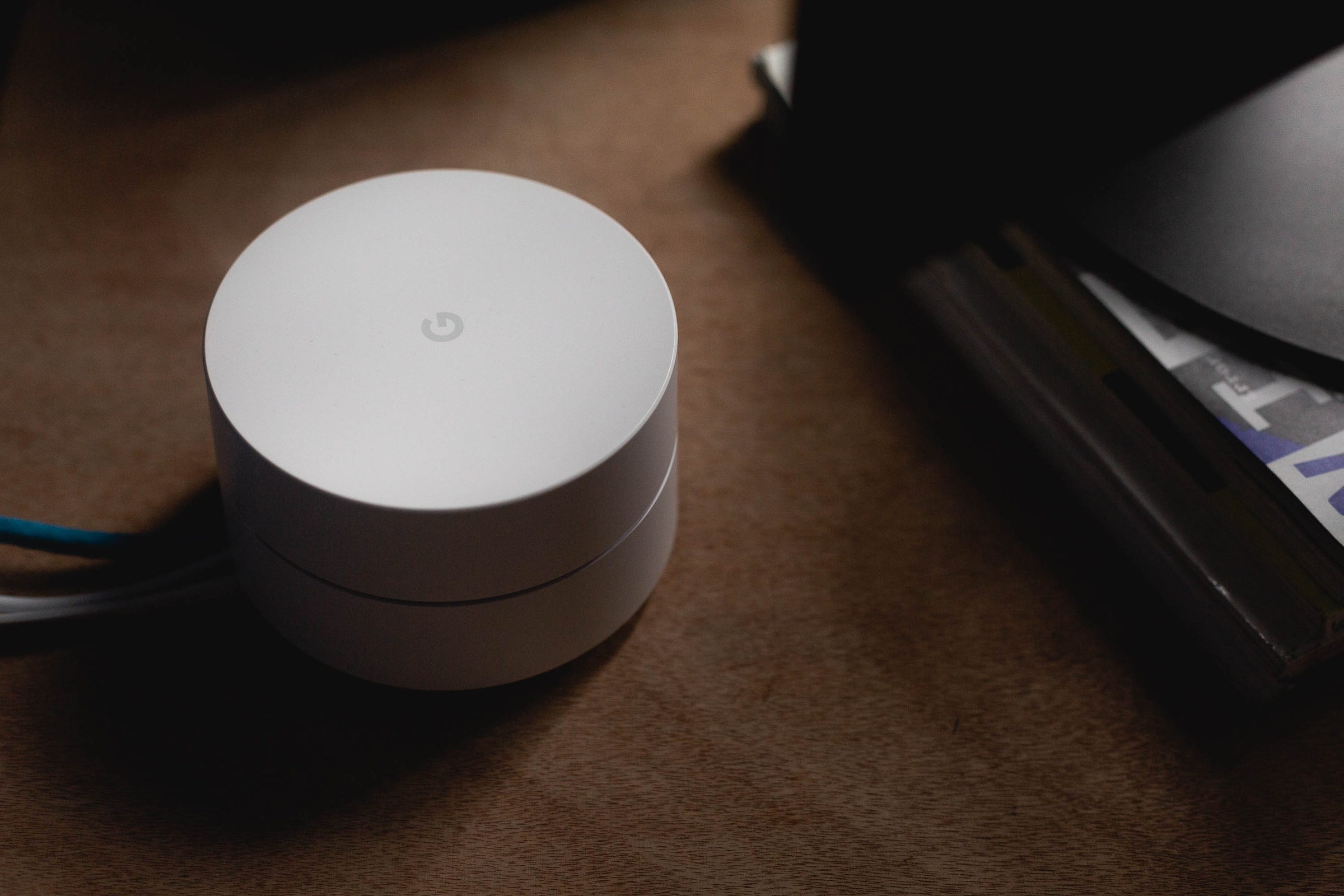
Weak security on WiFi networks can leave us vulnerable to various cyber threats. Whether it’s at home or in a business setting, understanding the implications of weak security is crucial in safeguarding our personal information and sensitive data. In this article, we will delve into the world of WiFi vulnerabilities, exploring what weak security actually means and the potential risks associated with it. By gaining a deeper understanding of these vulnerabilities, we can take proactive steps to protect ourselves and ensure our WiFi networks are secure. So, let’s uncover the hidden dangers of weak security on WiFi and empower ourselves with the knowledge to stay safe in the digital realm.
What Does Weak Security Mean on WiFi?
Weak security on WiFi refers to a network that lacks the necessary measures to protect against unauthorized access and malicious activities. It means that the network is vulnerable to attacks and can be easily compromised by cybercriminals.
When a WiFi network has weak security, it becomes susceptible to several risks, including:
Unauthorized Access
Weak security allows unauthorized individuals to connect to the network without permission. This can lead to unauthorized use of internet bandwidth, as well as potential theft or misuse of sensitive data.
Man-in-the-Middle Attacks
These attacks occur when an attacker intercepts the communication between a device and the network connections. With weak security, it becomes easier for attackers to eavesdrop on sensitive information or modify data packets, leading to data breaches or manipulation.
Data Theft
Weak security makes it easier for hackers to steal personal information, such as passwords, credit card details, and other sensitive data. This can result in identity theft, financial loss, and other forms of cybercrime.
Malware Infections
Cybercriminals can exploit weak security to inject malware into a WiFi network. Once in, the malware can spread to connected devices, compromising their functionality and allowing attackers to gain control or extract data.
Vulnerability Exploitation
Weak security often means that the WiFi network hasn’t been updated with the latest security patches and protocols. Attackers can exploit these vulnerabilities to gain unauthorized access to the network or launch targeted attacks.
How Can I Tell If My Wifi Security is Weak?
Encryption Protocol
Check the encryption protocol being used by your WiFi network. WEP (Wired Equivalent Privacy) is the weakest form of encryption and can be easily hacked within minutes. If you are still using WEP, it is a clear sign of weak security. Upgrade to the more secure WPA2 (WiFi Protected Access 2) or the latest WPA3 for enhanced protection.
Network Security Key (Password Strength)
Determine the strength of your WiFi password. Weak passwords, such as common dictionary words, birthdates, or simple combinations, can be easily cracked by hackers using brute-force or dictionary-based attacks. A strong password should be at least 12 characters long, contain a mix of uppercase and lowercase letters, numbers, and special characters.
Network Visibility
Check if your WiFi network is visible to others. A hidden network, also known as a closed network, adds an extra layer of security as it doesn’t broadcast its SSID (Service Set Identifier). If your network is visible to anyone nearby, it increases the chances of unauthorized access.
Unauthorized Devices
Monitor the devices connected to your WiFi network. If you notice any unfamiliar devices or devices that you don’t recognize, it could be a sign of weak security. Unauthorized devices can indicate that someone has gained unauthorized access to your network and is using it without your knowledge.
Outdated Firmware
Check if your WiFi router’s firmware is up to date. Manufacturers regularly release firmware updates to patch any security vulnerabilities and improve the overall security of the device. If you haven’t updated your router’s firmware in a while, it could be an indication of weak security.
Weak Signal Strength
Weak WiFi signal strength can also be an indicator of weak security. A weak signal can make it easier for attackers to intercept and exploit your network. Ensure that your router is placed in a central location and away from obstructions to maximize signal strength.
Lack of Two-Factor Authentication
Two-factor authentication adds an extra layer of security to your WiFi network. If you don’t have two-factor authentication enabled, it can be a sign of weak security. Enable this feature in your router settings to enhance the security of your network.
How Can I Strengthen My WiFi Security?
- Change the default router login credentials: The default usernames and passwords of routers are easily accessible online, making it effortless for hackers to gain access to your network. Change these credentials to a unique and strong combination of characters to prevent unauthorized access.
- Use a strong WPA2 password: WiFi Protected Access 2 (WPA2) is currently the strongest encryption protocol available for WiFi networks. Make sure to set a password that is at least 12 characters long and includes a mix of uppercase and lowercase letters, numbers, and special characters.
- Enable network encryption: In addition to setting a strong WiFi password, enable encryption to protect the data transmitted over your network. Use WPA2 encryption, as it provides a higher level of security compared to older encryption methods like WEP or WPA.
- Disable SSID broadcasting: By default, routers broadcast their network name (SSID) to make it easier for devices to connect. However, this also makes it easier for hackers to identify and target your network. Disable SSID broadcasting to make your WiFi network less visible to potential attackers.
- Implement a guest network: If you have visitors or clients accessing your WiFi network, it’s a good idea to set up a separate guest network. This way, you can keep your main network and its devices separate from guests, reducing the risk of unauthorized access to your sensitive information.
- Regularly update your router firmware: Router manufacturers often release firmware updates to fix security vulnerabilities and improve performance. Make sure to regularly check for updates and install them to keep your router secure.
- Enable two-factor authentication: Two-factor authentication (2FA) adds an extra layer of security to your WiFi network. It requires users to provide a second form of verification, such as a unique code sent to their mobile device, in addition to their password. Enable this feature in your router settings to enhance the security of your network.
- Enable a firewall: A firewall acts as a barrier between your network and the internet, monitoring and filtering incoming and outgoing network traffic. Enable the built-in firewall feature of your router, or consider using a dedicated firewall device or software, to add an extra layer of protection to your network.
- Disable remote management: Remote management allows you to access and manage your router settings from outside your home or office network. While convenient, it can also be a security risk if not properly secured. Disable remote management unless you have a specific need for it.
- Consider using a virtual private network (VPN): A VPN encrypts your internet traffic and provides a secure connection between your devices and the internet. This can be especially useful when using public WiFi networks or when accessing sensitive information online. Consider using a reputable VPN service to protect your data and maintain your privacy.
How Can I Strengthen My WiFi Security on iPhone and Android?
- Update your device’s operating system: Keeping your iPhone or Android device up to date with the latest operating system is crucial for security. These updates often include patches for security vulnerabilities and help protect your device from potential threats.
- Use strong and unique passwords: Creating strong and unique passwords for your WiFi network is the first line of defense against unauthorized access. Avoid using common passwords and consider using a password manager to generate and store your passwords securely.
- Enable WiFi encryption: Ensure that your WiFi network is encrypted with a strong encryption method, such as WPA2 or WPA3. This will prevent unauthorized users from intercepting and accessing your network traffic.
- Disable WiFi auto-connect: By disabling the auto-connect feature on your iPhone or Android device, you can have more control over which WiFi networks you connect to. This reduces the chances of connecting to insecure or malicious networks.
- Be cautious of public WiFi networks: Public WiFi networks are often unsecured and can be a hotspot for hackers. Avoid connecting to public WiFi networks for tasks that involve sensitive information, such as online banking or accessing personal emails.
- Enable device tracking and remote wipe: In case your iPhone or Android device gets lost or stolen, enabling device tracking and remote wipe features can help protect your personal data. These features allow you to track the location of your device and remotely erase its data to prevent unauthorized access.
- Install a reputable security app: There are many security apps available for both iPhone and Android devices that can help protect against malware, phishing attacks, and other security threats. Research and choose a reputable security app that suits your needs.
- Disable WiFi when not in use: When you’re not actively using WiFi, it’s a good practice to disable it on your device. This prevents your device from automatically connecting to potentially insecure networks and reduces the chances of unauthorized access.
- Keep your apps up to date: Just like your device’s operating system, keeping your apps up to date is important for security. App updates often include security fixes and patches for vulnerabilities. Enable automatic app updates or regularly check for updates manually.
- Consider using a virtual private network (VPN): Using a VPN on your iPhone or Android device can add an extra layer of security. A VPN encrypts your internet traffic and provides a secure connection, making it difficult for hackers to intercept your data. Look for a reputable VPN service and consider using it, especially when using public WiFi networks or accessing sensitive information online.
Conclusion
In summary, understanding the implications of weak security on WiFi networks is crucial for protecting our personal and business data. By adhering to security standards, such as using strong encryption protocols and regularly updating firmware, we can minimize the risks associated with weak security. Practicing good security habits, such as using strong passwords and enabling network segmentation, further enhances the security of our WiFi networks. By prioritizing security and staying informed, we can build a resilient defence against cyber threats and ensure the safety of our digital lives. Stay secure, stay connected!
Final Thoughts
At Buzz Cybersecurity, we pride ourselves on our unmatched expertise in the field of cybersecurity. From managed IT services to cloud solutions, disaster recovery to managed detection and response, we offer comprehensive solutions for businesses of all sizes. Serving not only our local California community but also neighboring states, we are dedicated to fortifying your digital security. Contact us today and let us protect your business from cyber threats.
Sources
1. https://www.passwordcoach.com/priority-5-bolstering-the-routers-passwords
2. https://www.pcmag.com/how-to/multi-factor-authentication-2fa-who-has-it-and-how-to-set-it-up
3. https://www.webopedia.com/definitions/wpa2/
4. https://www.pcmag.com/how-to/do-i-need-a-vpn-at-home
Photo by Andres Urena on Unsplash


